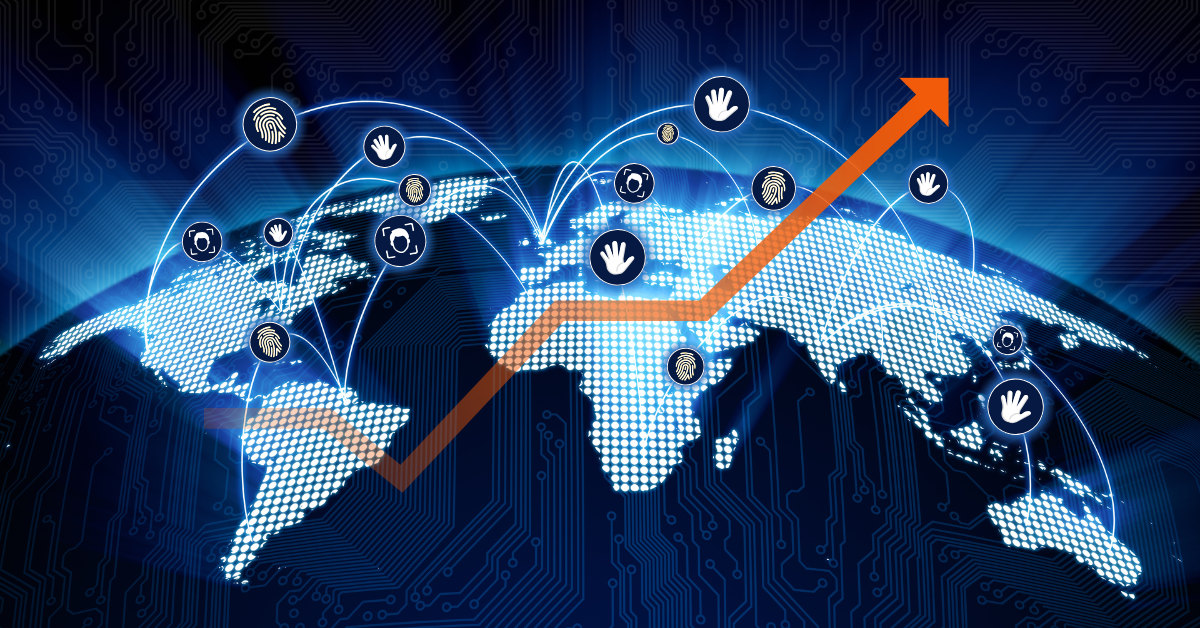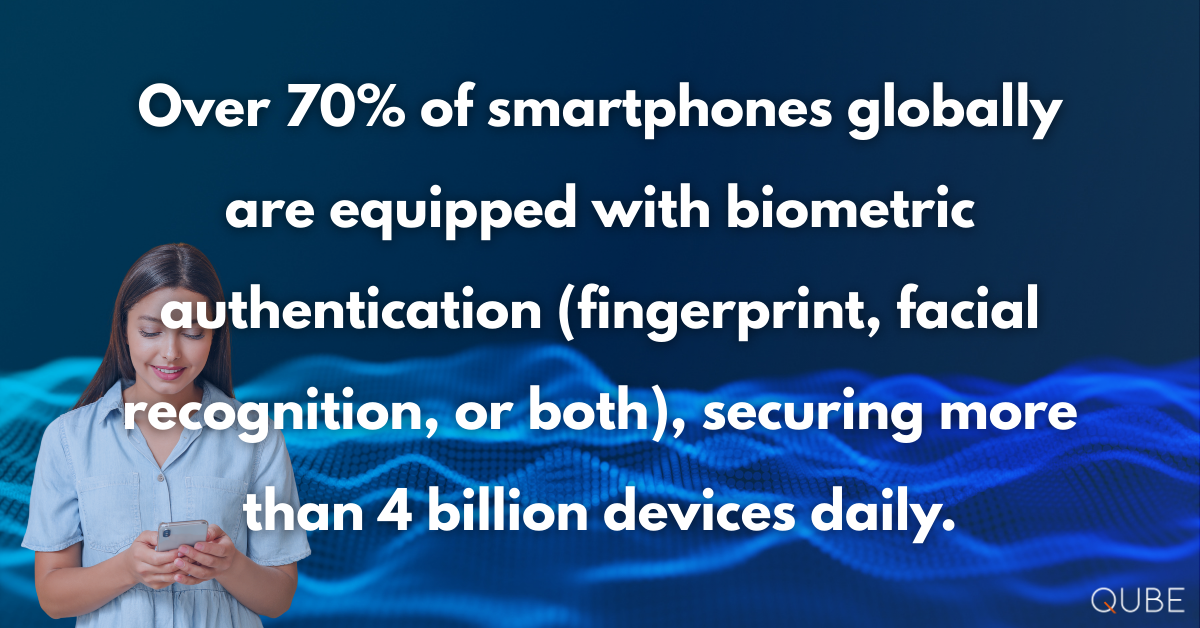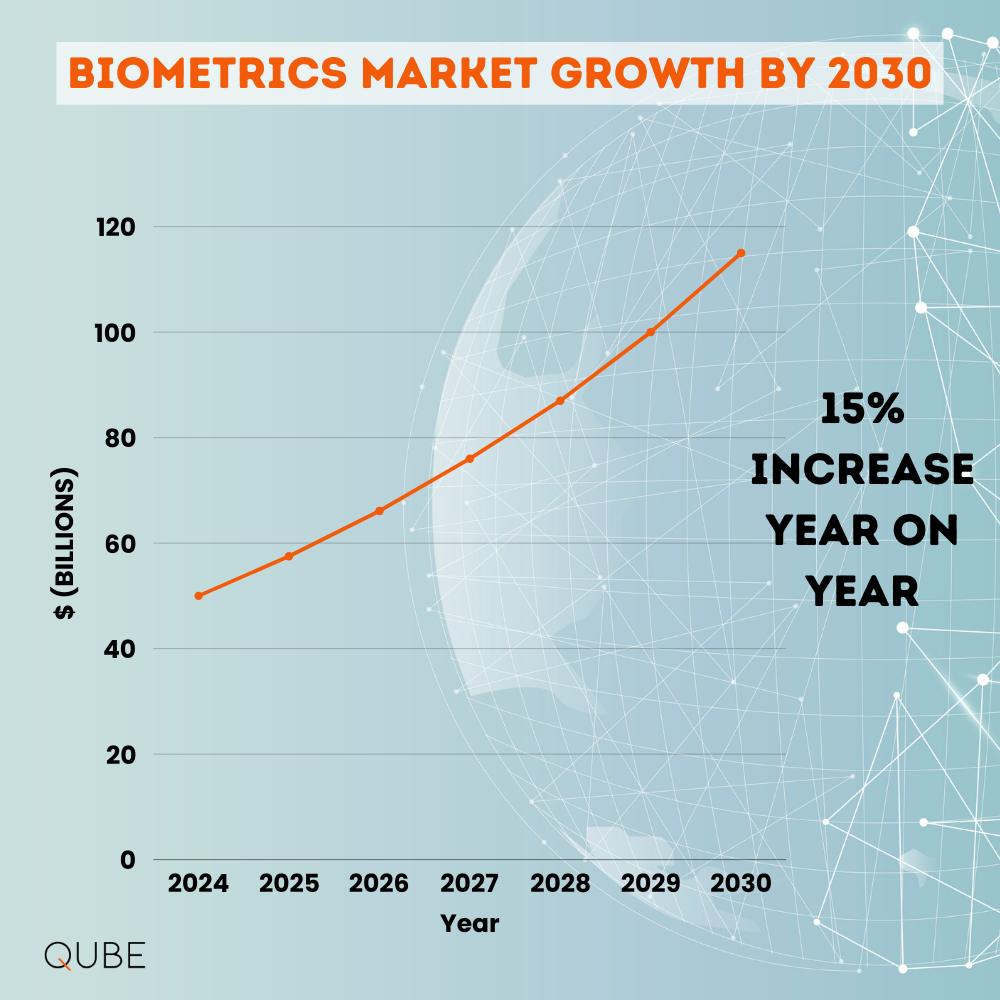Categories
Picture a world where a fingerprint opens your office, a palm scan pays for your lunch, or a face scan speeds you through a crowded airport—securely and instantly. At our company, we’re making this reality, powering the biometric market with solutions that redefine authentication in 2025. The biometric market is soaring, fueled by a global hunger for secure, effortless identity verification.
Join us as we explore its rise, detail today’s trials and adoption, showcase our contributions, highlight trends, compare biometrics to outdated systems, offer adoption strategies, tackle challenges, and envision the future, all from our passion for helping clients excel with biometric technology.

The biometric market has transformed from early experiments to a global necessity. Here’s a timeline of its pivotal moments:
1870s – Fingerprint Origins: Law enforcement began using fingerprints, setting the stage for biometrics.
1980s – Digital Advances: Automated fingerprint systems and vein recognition trials introduced digital precision.
2000s – Mainstream Entry: Facial recognition and palm vein scanning debuted, with Fujitsu launching secure access solutions.
2010s – Smartphone Boom: Features like Apple’s Touch ID made biometrics a daily norm for millions.
2020s – Contactless Surge: By 2025, touch-free systems dominate, driven by hygiene and speed demands.
The biometric market in 2025 is vibrant, with trials pushing innovation and widespread adoption reshaping industries. Governments, financial institutions, and businesses are leveraging biometrics for security and efficiency, with significant initiatives worldwide:
Japan is advancing biometric authentication at ATMs, emphasizing facial recognition and fingerprint systems. Seven Bank, operating over 26,000 ATMs in 7-Eleven stores, has rolled out facial recognition for cardless transactions, serving millions monthly. Mizuho Bank is piloting palm vein scanners at 200 ATMs to verify unique vein patterns, aiming to curb fraud, with plans to expand to 1,000 ATMs by mid-2026 if successful. These initiatives align with Japan’s target of 40% digital payments by 2025, reducing cash reliance.
China leads in biometric payments, with Tencent’s Weixin Palm Payment system at the forefront. This palm vein and print recognition technology is used in over 1,500 7-Eleven stores in Guangdong, Beijing Metro lines, and Shenzhen University cafeterias, handling over 10 million transactions monthly across cities like Guangzhou and Macau.
Alipay’s facial recognition payments power self-service checkouts in Shanghai’s retail chains, processing thousands of daily transactions. Shanghai Metro has palm vein scanners at 50 stations, while Guangzhou’s buses use facial recognition for fares on 30% of routes, showcasing China’s biometric-driven fintech and transit innovation.

Visa is pushing biometric payments with its “Pay by Palm” pilot in Singapore, partnered with Tencent. Visa cardholders from banks like DBS and OCBC use palm vein scanners at select cafes and retailers, linking palm data to payment tokens for secure, card-free purchases. Visa aims to expand to the US and Europe by late 2025, targeting airports and stadiums for high-traffic use. In Brazil, Visa’s Biometric Checkout Program uses facial recognition in over 100 grocery stores, reducing checkout times by 15%, reinforcing Visa’s role in global biometric payment adoption.
In retail, Amazon One’s palm recognition system is reshaping payments, allowing customers to pay by scanning their palm, linked to a credit card, without physical cards or devices. Launched in 2020 at Amazon Go stores, it’s now in over 150 Whole Foods locations, 50 Amazon Go and Fresh stores, and third-party venues like 20 US airports, 15 sports stadiums, and select Panera Bread outlets.
Trials at Starbucks in Washington state show mixed reception, with younger users embracing the speed (under 2 seconds per transaction) while some older customers hesitate over privacy concerns. Amazon reports over 3 million users enrolled by mid-2025, with plans to expand to 500 third-party locations by 2026, including university campuses and convention centers, driving contactless retail trends.
India’s Digi Yatra program uses facial recognition for airport IDs at 20 airports, processing 5 million passengers monthly, with a goal to cover all 140 major airports by 2026. The UAE is trialing palm vein digital IDs for services like healthcare subsidies, targeting 2 million enrollments by 2026. The UK is testing multimodal biometrics (fingerprint and facial) at Gatwick Airport’s immigration gates, aiming for 20% faster processing.
The biometric market is revolutionizing identity verification, and we’re leading the charge with devices that blend security and simplicity. From healthcare to retail, our clients rely on us to deliver systems that protect data and enhance experiences, aligning with the market’s demand for intuitive technology. The biometric market thrives on reliability, and we’re committed to advancing it with tailored solutions.
We specialize in three core biometric functions:

We serve industries where these devices deliver impact:
Our presence in the biometric market has grown steadily, with a 25% increase in device deployments across North America and Europe in 2024, particularly in banking and payment systems. In the UK, our facial recognition, fingerprint, and palm vein scanners are operational in over 1,000 healthcare locations for time & attendance, security and access control.
Looking ahead, we’re exploring opportunities to expand biometric usage in the West. We’re in early discussions with large multinational corporations in banking and security sectors for potential deals that could significantly broaden our reach. While specifics aren’t available yet, these partnerships aim to integrate our biometric solutions into high-impact applications, driving adoption across global markets. These opportunities, if realized, could position us as a leader in advancing secure, scalable biometric technology, further strengthening our role in the biometric market.
The biometric market is evolving, with four trends shaping its future:
Palm vein and facial recognition lead for hygiene and ease. Our payment system clients use these for fast, secure transactions.
Algorithms enhance accuracy in challenging conditions, like crowds. Our access control clients rely on facial recognition for reliability.
Combining biometrics boosts protection. Our election clients pair palm vein and facial scans for fraud prevention.
On-device processing ensures data safety. We’ve helped proctoring clients adopt these for compliance with privacy laws.
We often highlight why biometrics outperform traditional systems like passwords or ID cards. Here’s our perspective on the biometric market’s edge:
Biometrics: Unique traits resist replication, ensuring robust protection.
Passwords/ID Cards: Prone to theft or loss, creating risks our clients eliminate.
Biometrics: A scan is effortless, streamlining user experiences.
Passwords/ID Cards: Managing credentials frustrates, which our solutions bypass.
Biometrics: Automated systems cut administrative costs, as our time-tracking clients see.
Passwords/ID Cards: Replacing cards or resetting passwords adds expenses.
Biometrics: AI updates counter new threats, vital for our election clients.
Passwords/ID Cards: Static systems lag, requiring frequent updates.
To empower clients in the biometric market, we share four adoption strategies:
Start biometrics in one area to refine performance. Our payment clients piloted palm vein scanners at select terminals before scaling.
Teach scanner use for accuracy. We’ve trained a variety of staff in different industries, reducing facial recognition errors significantly.
Invest in devices that grow, like our cloud-ready solutions. Access control clients use these to expand seamlessly.
Select systems meeting data laws to avoid penalties. We’ve supported many clients with encrypted biometrics for regulations.
The biometric market is poised for a bold future, and we’re ready to lead. Governments will expand biometric voter authentication, ensuring election integrity—regional pilots show promise. Payment systems will adopt our palm vein and facial recognition scanners for secure transactions, a priority for our clients. Time and attendance tracking will rely on our fingerprint solutions for workplace efficiency.
We’re exploring iris recognition for high-security contexts and behavioral biometrics, like voice and gait analysis, for seamless fraud detection. AI will sharpen accuracy, and lower costs will broaden access. The biometric market promises a world where security is intuitive, and we’re set to shape it.
We’re thrilled to drive the biometric market in 2025, where technology builds trust and precision. From fingerprint accuracy to palm vein security, our solutions are transforming banking, elections, access control, and more. With smart strategies and proactive solutions, our clients lead—securing processes, streamlining operations, and enhancing trust. The biometric market is your chance to innovate, and we’re here to make it happen. Ready to redefine security with biometrics? Let’s create a safer, smarter future together.